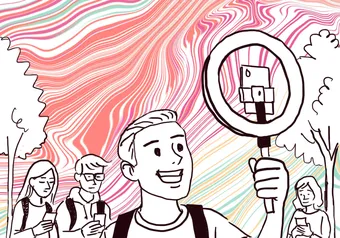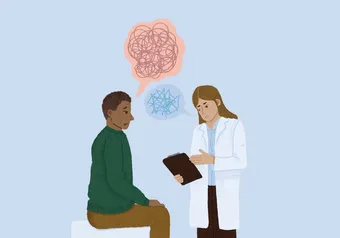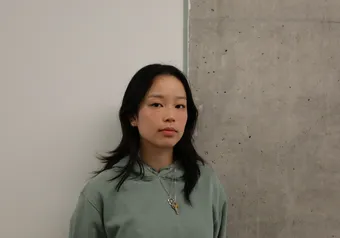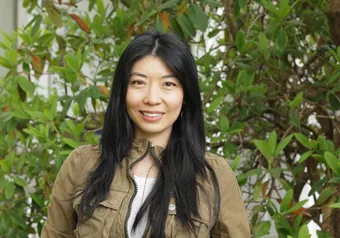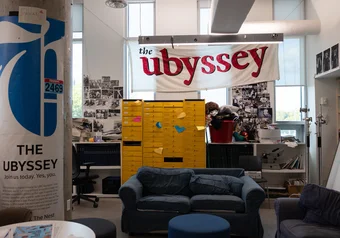It was a crisp, cool January evening and Blake Nill, the head coach of the Thunderbird football team, had invited two new recruits in with their families to sign letters of intent at the new Academic Centre beside Thunderbird Stadium.
The letters of intent are contractual commitments between UBC’s sports program and an athlete. Once an athlete signs this letter, they are prohibited from contacting or communicating with other schools for the purpose of playing for that school’s program. Breaching this contract results in a potential suspension of the student athlete from the Canadian Interuniversity Sport— the collegiate league that UBC is involved with.
In other words, for these recruits, there was no going back.
The moment the football players, Jagroop Sandhu and Ryan von Ende, signed these letters, they became a part of the 2016 recruiting class. But this singular moment, as they etched their names out on the Thunderbird adorned sheets of paper, was several months in the making.
Several Thunderbird teams won their respective nationals this year — football, women’s soccer and women’s field hockey, to name a few. The teams that did not, such as the women’s ice hockey team and the men’s basketball squad, have improved considerably compared to the last few years, transforming from seasonal punching bags to national contenders.
The Thunderbirds’ success can be attributed to the leadership of the coaches and the resilience and hard work of the players, but there is an additional dynamic that’s worth exploring — recruiting. While they might be the ones scoring the victory points in every game, the right recruits can be instrumental in the team’s victory several years down the road.
Blake Nill is the stoic head coach who took charge of the ’Birds football team a day after resigning as the head coach of University of Calgary Dinos, and a month after Shawn Olson’s five-year tenure ended. Nill had led the Dinos to six-consecutive Canada West championship wins and during his term at St. Mary’s University in Halifax, his team won two straight Vanier Cups. As head coach of very successful teams, his role had encompassed more than leading the team — he’s had a hands-on approach in the recruitment and growth of his players. With his track record, he knows one or two things about successful student athlete recruitment.
“I still remain a qualitative recruiter and I focus on the quality before the numbers,” said Nill, describing his approach to recruitment. He concentrates less on getting a large number of average talent level players into his team and more on the individual talent and quality of each player, which translates to enhancing the quality of the sports program as a whole.
“You’re obviously going to have to fill holes, but you’re never going to pass up on an athletic young man with potential to help you in the future,” explained Nill. “Your priority has to be to ensure depth in your program. You want to make sure that the kind of athletes that you need in your program to be successful are the ones you’re bringing in.”
Nill pointed to an interesting trend in athletic recruitment where coaches now have to make initial contact with the student athletes they are interested in long before the prospective athletes graduate from high school. Sandhu and von Ende met Paul Orazietti, the recruiting coordinator and special teams coach, a year before making their decisions to come to UBC. Orazietti has played a key role in scouting and recruiting students at UBC for about nine seasons.
“You have to have made the initial contact with the student athlete probably in their grade 10 year or at least in their grade 11 year,” said Nill, as he explained the traditional timeline for athletics recruitment today. “ So you can get the process [started] and give it enough time to develop the relationship that you need."
When recruiting, coaches and recruiting staff look for the best athletes in their respective leagues — whether from British Columbia high schools, out-of-province high schools or local leagues. The list of successful athletes is then trimmed down based on academic requirements. Institutions do not want just great players, they want good students too. A minimum of a 60 per cent average in high school courses is required in order to play in the CIS. In order to stay eligible after an athlete is recruited, they also have to take at least nine credit hours in the term in which they are competing.
The competition among universities for good recruits is high as each school seeks out the most successful athletes. But the schools known for good facilities and strong academics get the first pick.
“Everyone has a similar goal. If you look at whether NCAA or CIS — in my experience, the better — the programs that have more to offer are done recruiting first,” said Graham Thomas, head coach of the women’s ice hockey team. He took his team from a single victory in 2012 to a Canada West Championship victory in 2013.
Once the coaches have made initial contact with potential recruits, they must determine if the athlete is a good fit for the university and vice versa. Nill’s strategy has three steps.
“You want to see if he’s at the talent level that you look for as a coach,” said Nill. “If he meets that criteria, right away you look at the academic part.”
The third step is to determine whether UBC is right for them. Nill makes sure that both the student and his family are happy with the athlete's decision to come to UBC and that the student athlete will be a good addition to the team.
“It’s important that both sides are happy with the decision because that’s the only way you’re going to be productive with it,” said Nill about the student athletes and the university.
All of this is going on in the background as the Thunderbird sports program rakes in one championship wins at a time. The stakes are high, leading to the occasional controversy surfacing from the process. The enticement of quarterback Michael O’Connor — which involved dinner with NFL hall of famer Warren Moon and Seattle Seahawks playoff game — from Pennsylvania State University last year drew some attention to the ambiguity of the current CIS rules for recruitment.
As a result, the Canadian Interuniversity Sport decided to implement tighter regulations on recruitment back in December 2015. The new rules, which Nill and other top CIS coaches helped craft, place stricter checks on the involvement of alumni in attracting new recruits. O’Connor also worked a summer internship at a UBC alumnus’ company, Aquilini Investment Group and with the new rules, alumni who employ athletes are explicitly prohibited from offering them any additional benefits or financial subsidies. Taking athletes to professional sports games has also been prohibited.
Nill admitted in an interview with The Globe and Mail that UBC could not have recruited O’Connor the same way with the regulations that have been implemented.
The occasional controversy comes with the territory of recruiting in such an aggressive market. But without considerable effort in college recruitment, the top university sports programs would not be what they are today. With no constant influx of top notch players, a program’s success is hindered. Conversely, the better the school’s recruitment, the more victories they secure.
There is strong evidence that good recruits produce silverware. In particular, Quinn van Gylswyk, who scored the late field goal that put the ’Birds above the University of Montréal Carabins in the Vanier Cup, was recruited by UBC and became one of the best punters in the country. Other players instrumental to their regular season success and CIS victory — like upper years Terrell and Marcus Davis and A.J. Blackwell — were also top players in BC high schools and are all examples of how the right recruitment move can help a program years down the line.
"You have to meet strategic decisions on each individual because there’s a finite amount of money and you have to spend it in the right place to make sure that you have success."
Success begets success. The associated prestige and boost in reputation that comes with being a perennial contender in a regional league and the national level attracts high school student athletes that want to play for the team — therefore UBC starts getting a reputation that prospective students wish to be a part of and defend.
It is a self-fulfilling cycle. Sandhu and von Ende both said they chose UBC because of its thriving sports program and the great coaches.
“Honestly, the football speaks for itself — defending national champs. It is one of the best schools in Canada,” Sandhu told The Ubyssey minutes before he signed his letter of intent. von Ende agreed, saying that “it was definitely the football team” that brought him here.
But it’s not always a great time. Besides facing stiff competition from other good schools around the country, a significant increase in academic criteria and requirements for athletes complicate the process of securing a high quality and quantity of athletes.
Higher expectations means less scholarships are readily available for athletes. The number and values of scholarships stay the same more or less. But with an increase in entrance requirement and averages required to obtain these scholarships, it would be harder for students who would otherwise get these scholarships under previous circumstances to get them now.
A typical offer a prospective student athlete can get is an Athletic Financial Award — also known as an athletic scholarship — which can include anything from bursaries, merit awards, prizes or leadership awards. To be eligible for these, a student must either have a first-year entrance average of at least 80 per cent or at least a 65 per cent at the beginning of any other other year. For each athlete, universities in the CIS are restricted only to funding their tuition and compulsory fees. However, the value and number of scholarships each university has available to give varies. The regional associations such as the Canada West Universities Athletic Association and the Ontario University Athletics tend to have their own additional regulations.
“You have to meet strategic decisions on each individual because there’s a finite amount of money and you have to spend it in the right place to make sure that you have success,” explained Nill.
College sports recruitment usually flies under the radar for most people. But for coaches and recruitment staff, this other world is just as important as the actual regular season. For them, it is imperative that they do it right.
First online
Share this article


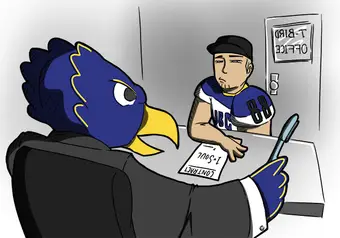
![['']](https://storage.googleapis.com/ubyssey/media/renditions/12736102_958407967582965_4923321.width-1000.format-webp.webp)

